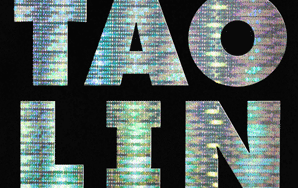A Review Of Tao Lin’s ‘Taipei’
In refusing to label 'Taipei' “autobiography,” Lin troubles not only the meaningfulness of the distinction between “fiction” and “nonfiction,” but also the very notions of truth and falsity that underlie attempts to understand and order.

It’s an easy mistake to make. “I’m not feeling anything. And it’s been two hours — I’m going to take some more,” they say. But as soon as more is taken, the first round intrudes suddenly into conscious experience with a second wave now inevitable. And when that next wave comes, swelling on top of the first, the intensity overwhelms and becomes oppressive.
A major component of a bad trip is the fear of irreversibility — that the excessive dosage has pushed one’s mode of thinking past some point of no return, to a place where brain-fed reality will never again be what it was before. This terror is then amplified by the substance: the panic presents itself as a permanent feature of one’s new existence, which, in turn, increases the gravity of the situation in a vicious feedback loop of fear and loss.
Such a condition afflicts Tao Lin’s Paul at the end of Taipei. Having eaten too many hallucinogenic mushrooms at the urging of his wife, Erin, Paul finds himself cut free from the world and approaching a dangerous “indiscernible distance beyond which he would not know how to return.” He thus descends into his mind, his world destabilizing as once-sturdy concepts and relations dissolve into strange unfamiliarities.
The overdose (you can’t overdose on mushrooms, Erin asserts, tentatively) rests as a heavy capstone upon the steadily intensifying drug use that inflects most of Paul’s experiences and relationships throughout the book. Erin and Paul seem to take some combination of Adderall, Xanax, Percocet, MDMA, cocaine, LSD, and on a near-daily basis, with heroin becoming incorporated into their regular routine by the end of the book. And though the bad trip brought on by excess psilocybin leaves Paul alive in the final pages, the incident settles alongside other worrying developments, including a heroin overdose that leaves him vomiting uncontrollably as he wanders New York City.
There are other signs of trouble. As Paul’s drug use escalates, he increasingly withdraws from his friends and the steady stream of parties and social engagements that fill the first half of the book. At the same time, his relationship with his mother is in a state of rapid deterioration due to her efforts—and Paul’s resistance—to rein in his drug usage.
Some would say that Paul has a drug problem. Lin does not. In fact, through the voice of Paul, Lin argues that:
there [is] no such thing as a ‘drug problem’ or even ‘drugs’—unless anything anyone ever did or thought or felt was considered both a drug and a problem—in that each thought or feeling or object, seen or touched or absorbed or remembered, at whatever coordinate of space-time, would have a unique effect, which each person, at each moment of their life, could view as a problem, or not.
It is expected that good writing will have a light touch when it comes to explanation—that it will show, not tell. Yet in this passage we see something far more radical: an explicit rejection of theoretical explanation as a way of understanding and interpreting events.
In trying to make sense of the choices we (and others) make, the natural inclination is to situate certain behaviors within the bounds of an abstract concept that can be more easily evaluated. Does one drink a day make you an “alcoholic?” Probably not. But what about four or five? What if you’re in college? What if you’re a highly-successful professional writer? Together, these discrete facts comprise a particular mode of existence that, once labeled, can be either encouraged or pathologized. However, in rejecting the meaningfulness of the term “drug problem,” Lin pushes back against such interpretation. He presses the reader to adopt an alternative conceptual framework for understanding Paul—or to perhaps abandon attempts at understanding altogether.
Paul’s abrupt decision to marry Erin in Las Vegas further troubles the meaningfulness of social categories. To describe Erin as Paul’s “wife” is to imply a broad range of things about the nature of their relationship. One assumes that it is stable, domestic, and comfortably familiar; that their past history is extensive and serves as stable foundation upon which their current relationship is built; and that their relationship will persist well into the future. The reality is that Paul and Erin’s “marriage” lacks all such features, having emerged from impulse and irony, a brief period of drug-fueled infatuation and an impetuous decision to elope. If “marriage” is so broad as to include Paul and Erin within it, one wonders, is the term actually that useful for understanding social relationships? And, if not, what other seemingly descriptive terms might be similarly useless?
Even the title of the book and its classification as fiction seem an impish attempt to mock explanation and categorization. Lin has stated in interviews that the title is arbitrary and that the book may as well have been called “MacBook.” In doing so, he successfully casts a shade of doubt on the notion that Taipei might contain any unifying theme capable of explaining the events catalogued in its pages. For, if the book cannot even be meaningfully titled, what sort of abstract ordering can be imposed on its contents? A similar effect is achieved through Lin’s labeling the work as fiction despite the fact that most everything that happens to Paul in the book (ranging from his Las Vegas wedding to the San Francisco book reading he gives while on mushrooms) happened to Lin in real life. In refusing to label Taipei “autobiography,” Lin troubles not only the meaningfulness of the distinction between “fiction” and “nonfiction,” but also the very notions of truth and falsity that underlie attempts to understand and order.
At the same time, Taipei is stripped of any of the signs or signifiers that might otherwise convey abstract social truths. Roland Barthes has noted the way a carefully placed forehead curl in a film can signal that the wearer belongs to Ancient Rome—regardless of whether Ancient Romans, in fact, wore their hair in this way—just as a sweaty brow can convey inner turmoil. Barthes hated these “intermediate” signs, considering them a form of cheating and duplicity whereby an author conveys meaning through a contrived signifier while seeking to disguise it as the natural sort that one might encounter in the physical world. He would thus be pleased to find in Lin’s writing a minimalist hyperrealism devoid of such symbols; a bare rendering of events, interactions, and thoughts that may as well have been selectively transcribed from a video recording.
What is so compelling about Taipei is that its assault upon the tools of understanding has the perverse effect of illuminating human experience and interaction. Having pared away both explanation and intermediate signs, Lin instead fills his pages with the meticulous detailing of occurrences and exchanges, with particular attention paid to the intricacies of thought. In doing so, Lin renders key social moments visible. There is, for instance, the stomach-dropping turning point at the opening of the book where an otherwise-typical argument between Paul and then-girlfriend Michelle goes in an uncharted direction—one where a return to normal relations is no longer assured. Lin does nothing more than note Paul’s flat awareness that “they hadn’t parted like this before,” and then moves on. Yet one gets stuck on the moment, recalling every past break-up that has followed from this very observation, which, for some reason, has never before been the object of conscious attention.
There are many of these moments in Taipei — where a petty criticism or an unfollow on Twitter is brought into stark relief, its role as a constituent part of an imploding relationship now clear. Beyond these, however, Lin also manages to pick out the countless small realities of contemporary existence that typically go overlooked in fiction, ranging from Facebook stalking to buying organic food. And, pleasantly, one finds that having such trivialities clearly presented for consideration—often for the first time—is just as striking of an experience as encountering freshly-exposed moments of social consequence.
At the same time, the absence of explanatory guidance presses the reader to develop her own understanding of what exactly is happening in Paul’s increasingly destabilized social world. Taipei demands that we learn to make sense of things without the lazy heuristics that so often carry us through fiction — and whose absence beyond fiction’s bounds can leave some lost. For, like a parasitic bird that replaces another’s eggs with its own, intermediate signs tend to latch onto that which they signify, their linkage in our minds overshadowing the signified’s true and natural signs. Consider, for example, this brief excerpt from a Slate essay explaining the signs of drowning:
How did this captain know — from 50 feet away — what the father couldn’t recognize from just 10? Drowning is not the violent, splashing call for help that most people expect. The captain was trained to recognize drowning by experts and years of experience. The father, on the other hand, had learned what drowning looks like by watching television.
In this case, the father so expects the intermediate signs of drowning that he fails to recognize the natural signs of drowning as such. Too much time spent with a certain variety of fiction has left him blind to the meaning that lies behind everyday moments.
It is an ailment for which Taipei is the antidote. In its unlabeled staccato of bare events and thoughts, the reader must recognize for herself the patterns of increasing alienation, drug abuse, and professional difficulties that are progressively consuming Paul’s existence. And she must then answer for herself: are these the signs of a man drowning? ![]()




